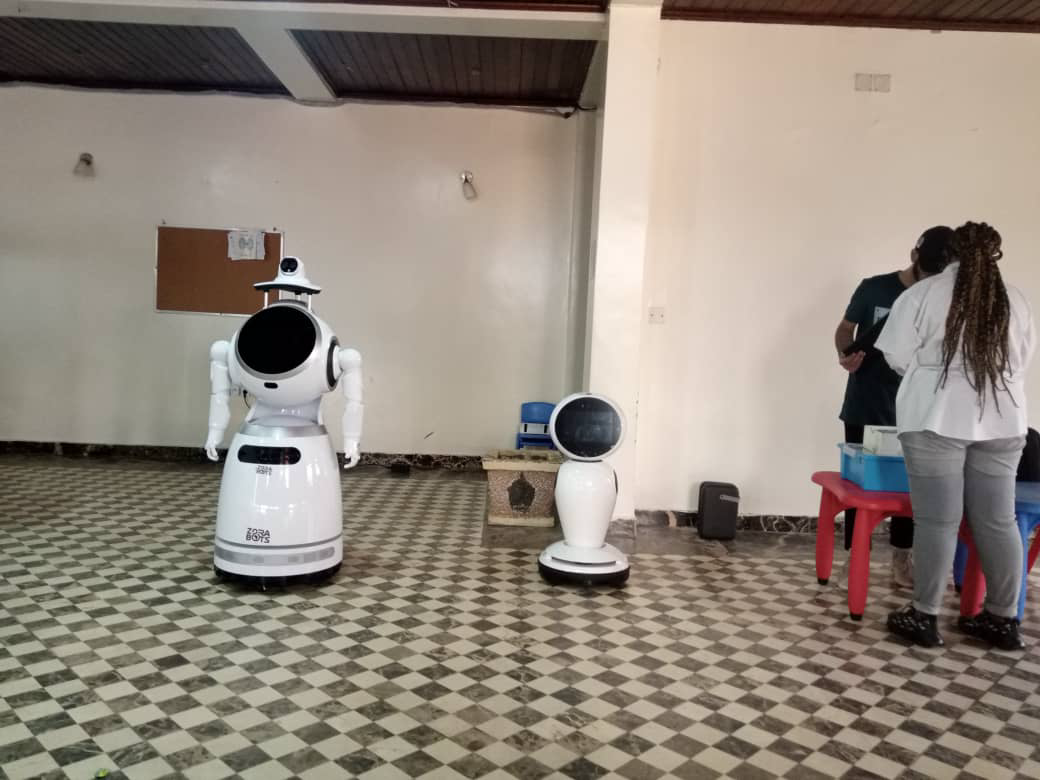Disclaimer:
Please be aware that the content herein has not been peer reviewed. It consists of personal reflections, insights, and learnings of the contributor(s). It may not be exhaustive, nor does it aim to be authoritative knowledge.
Title
Please provide a name for your action learning plan.
Experimenting the use of educational robots to enhance speech therapy for children with special needs
Challenge statement
Challenge type: If you are working on multiple challenges, please indicate if this is your "big bet" or "exploratory" challenge.
Please note: we ask you to only submit a maximum of 3 challenges - 1x Big Bet, 2x Exploratory. Each challenge must be submitted individually.
EXPLORATORY
Challenge statement: What is your challenge? (Please answer in specific terms: "Our challenge is that...”.)
Our challenge is that children with special needs in Rwanda have limited access to tools and facilities for their learning.
Background: What is the history of your challenge? What is causing or driving it? Who is involved? How does the current situation look like? What undesired effects does it produce?
Children with special needs require special learning methods and tools for their speech and language development. Language and communication constitute one of the cornerstones of cognitive development of children.
Children with mental disability and disorders have communication challenges and 99% are non-verbal. Access to specialized professionals in speech and language therapy is still a concerning challenge in Rwanda given that, there are limited specialized learning centers to train professionals in speech therapy in Rwanda. The few trainers available have limitations in assisting children with special needs because most of the times, they need to do a one-on-one session and it becomes a challenge to assist every child in a classroom at a desired level. Consequently, it delays their speech and language development and affect their education in general.
Quantitative evidence: What (official) data sources do you have on this challenge that better exemplifies the importance and urgency of this frontier challenge? You can add text, a link, or a picture.
We conducted interviews with parents who have children with special needs
- We conducted interviews with trainers who assist children with special needs
Qualitative evidence: What weak signals have you recently spotted that characterizes its urgency? Please provide qualitative information that better exemplifies the importance and urgency of this frontier challenge. You can add text, a link, or a picture.
We visited Silver bells schools to experience how children with special needs learn. In Rwanda, we are facing a challenge of limited speech therapists to help children with special needs learn and improve their speech and language development.Currently, there is only one specialized school with only two trained speech therapists supporting 74 students. This causes delay in learning and affects their education in general.
Value proposition: What added value or unique value proposition is your Accelerator Lab bringing to solving this challenge? Why is it your Lab that needs to work on this challenge and not other actors within UNDP, other stakeholders in the country respectively? Why is it worth investing resources to this challenge?
Using educational robots will enhance speech therapy effectiveness and help children with conditions like autism spectrum disorder, down syndrome, pragmatic language impairment, specific language impairment, speech and language delays in language development which are very essential in language development for children in areas of comprehension, articulation and pronunciation, memory, storytelling, eye-contact, writing and reading.
The use of educational robots will also increase children’s’ interest in learning by making learning more interactive and fun.
In addition, educational robots will help in repetition exercises to build language exercises and perform routine tasks that help children to practice. This will enable therapists to focus on other tasks that require one-on-one interaction with learners. An educational robot does not criticize a kid or an adult when she/he makes a mistake. An educational robot entertains a child when tired, through dance, music, visual and audio interactions, and this can trigger a child's curiosity and interest to play and learn with it.
Short “tweet” summary: We would like to tweet what you are working on, can you summarize your challenge in a maximum of 280 characters?
The use of educational robots to enhance speech therapy and language development for children with special needs.
Partners
Who are your top 5 partners for this challenge? Please submit from MOST to LEAST important and state Name, Sector and a brief description of the (intended) collaboration.
Please state the name of the partner:
- Silver Bells
- ZoraBots
What sector does our partner belong to?
Academia
Please provide a brief description of the collaboration.
Silver bells is highly specialized center which provides education for special needs children. Through our sense making activities and solutions mapping, we visited silver bells center and identified gaps in learning methodologies and together we are running an experiment to use robots in speech therapy for children with special needs.
Is this a new and unusual partner for UNDP?
Yes
Learning questions
Learning question: What is your learning question for this challenge? What do you need to know or understand to work on your challenge statement?
Can educational robots help to make learning more effective and fun for children with special needs?
To what stage(s) in the learning cycle does your learning question relate?
Sense, Explore, Test
Usage of methods: Relating to your choice above, how will you use your methods & tools for this learning question? What value do these add in answering your learning question?
Solutions mapping will enable us to make existing solutions addressing the issue of speech therapy
Proof of concept and design thinking will enable us to test our hypothesis
Co-creation: We will co-create with our partners to design a solution that respond to the users' needs
We will use gamification to include games in the speech therapy exercises
Existing data gaps: Relating to your choice above, what existing gaps in data or information do these new sources of data addressing? What value do these add in answering your learning question?
Through observation we will be able to capture emotions of children and teachers while using this new learning technique.
Through continuous feedback, we will help us to learn and improve our solution.
Closing
Early leads to grow: Think about the possible grow phase for this challenge - who might benefit from your work on this challenge or who might be the champions in your country that you should inform or collaborate with early on to help you grow this challenge?
If this experiment proves to be successful, we are planning to work with our partners to leverage on using educational robots in improving the learning of children with special needs in speech therapy and language development.
END OF ACTION LEARNING PLAN: Thank you! The form saves automatically and your submission has been recorded. You may now exit this window.


 4Quality education
4Quality education 10Reduced innequalities
10Reduced innequalities
 11Sustainable cities and communities
11Sustainable cities and communities
Comments
Log in to add a comment or reply.